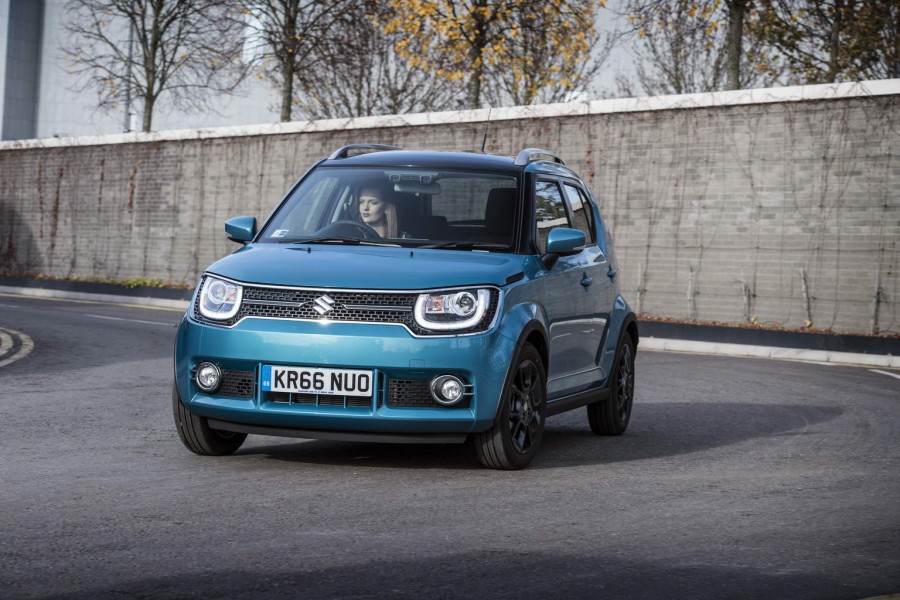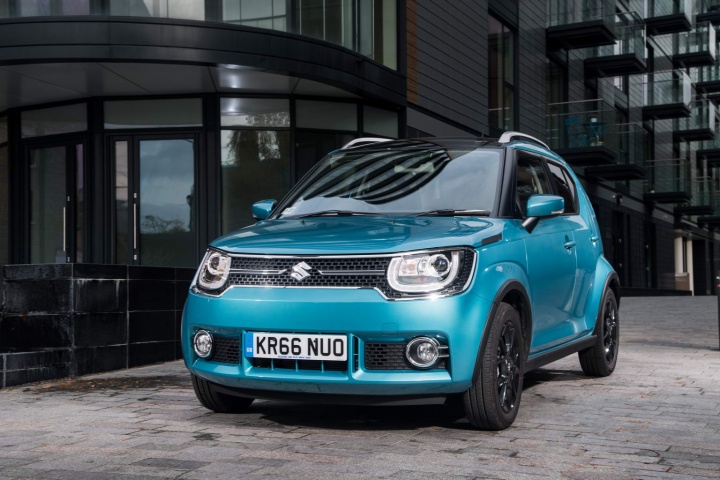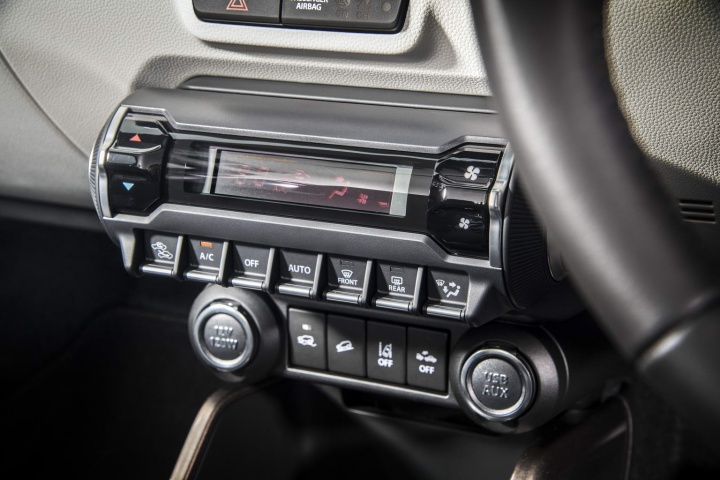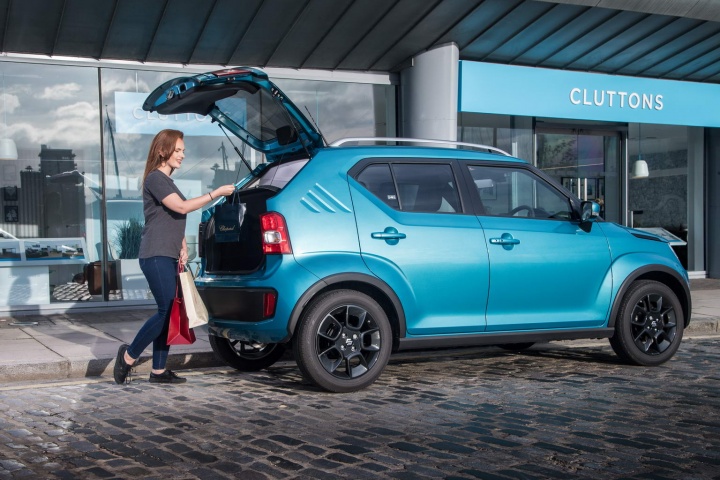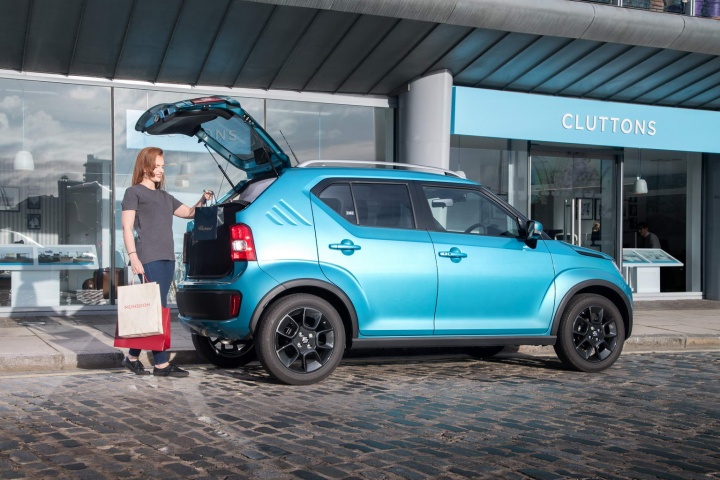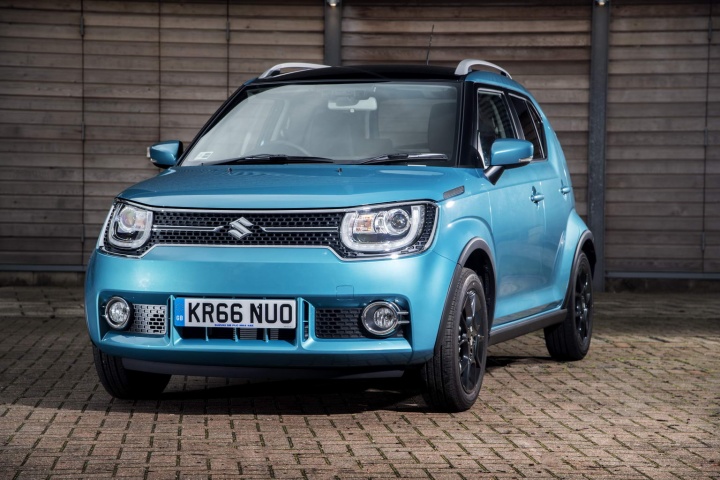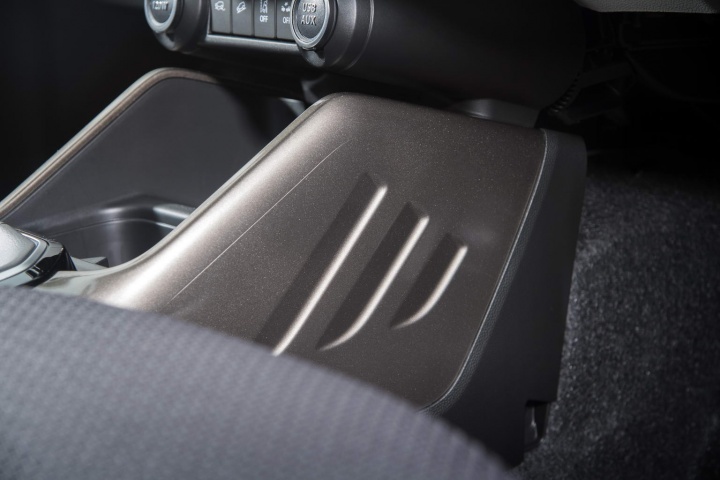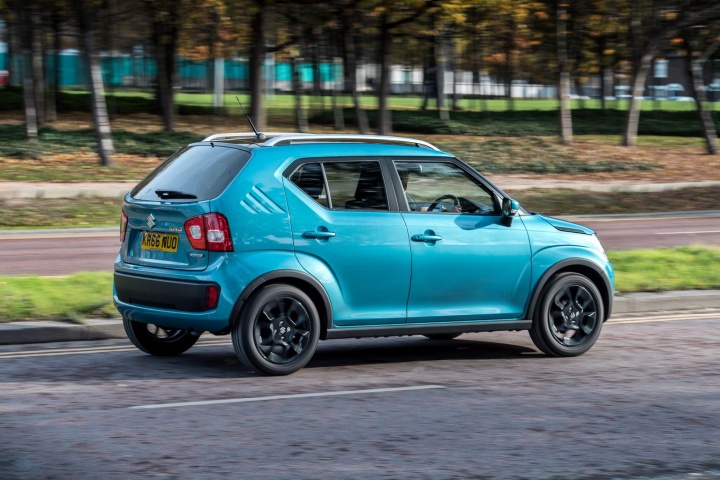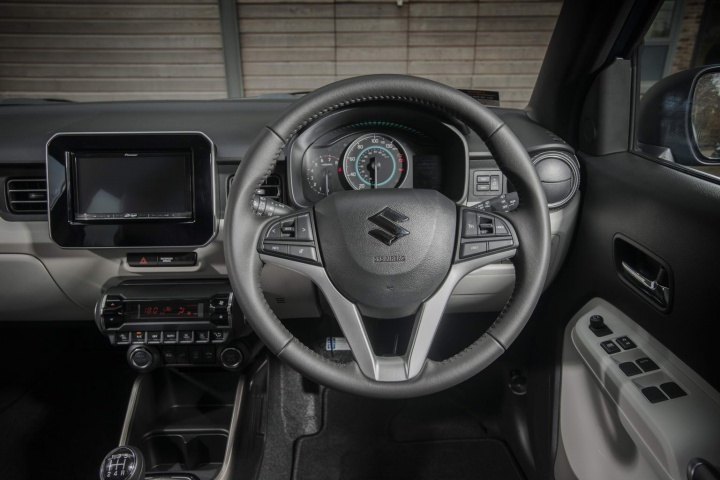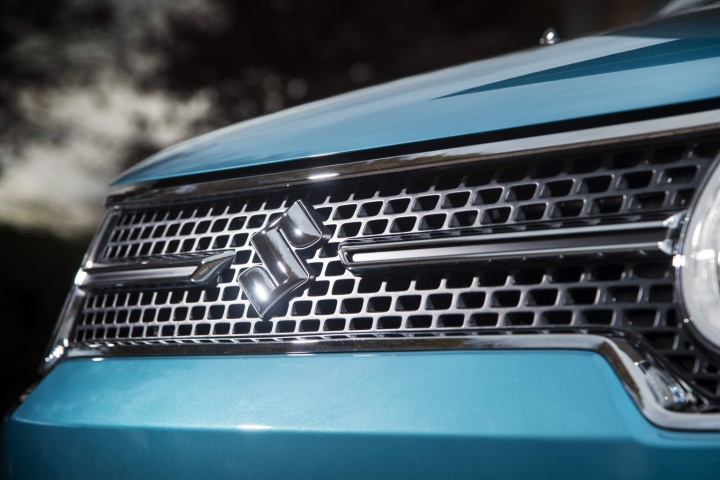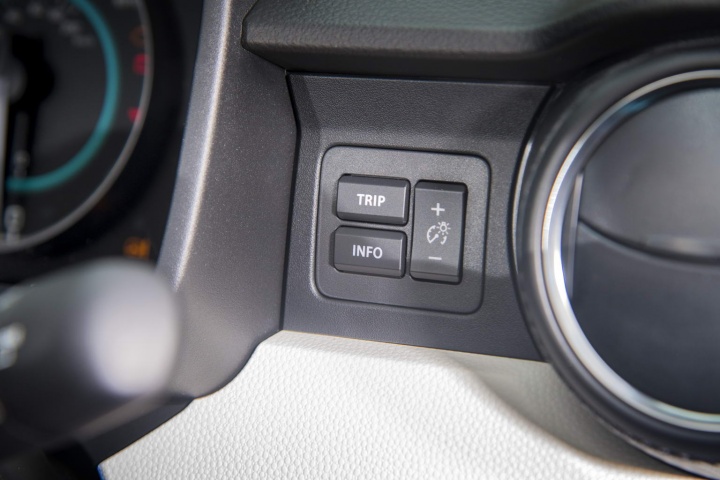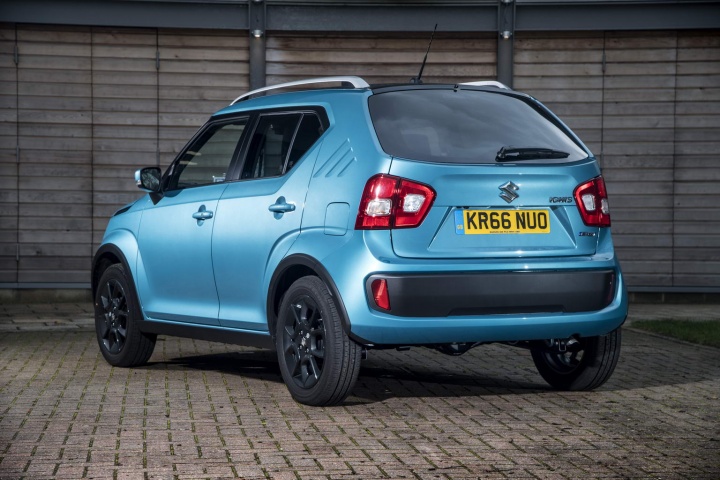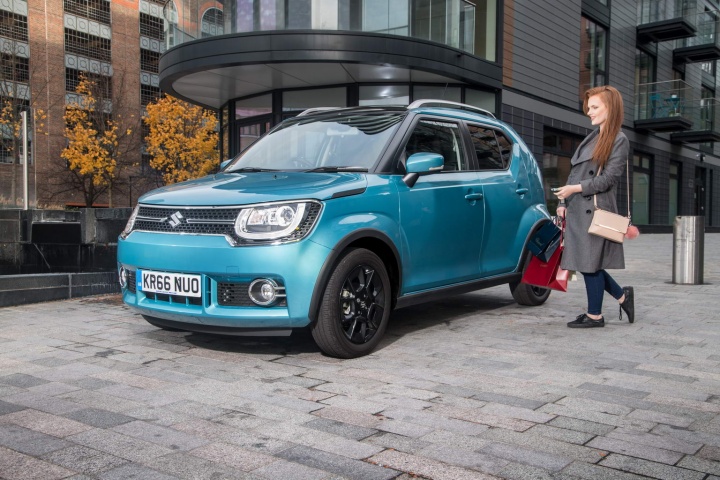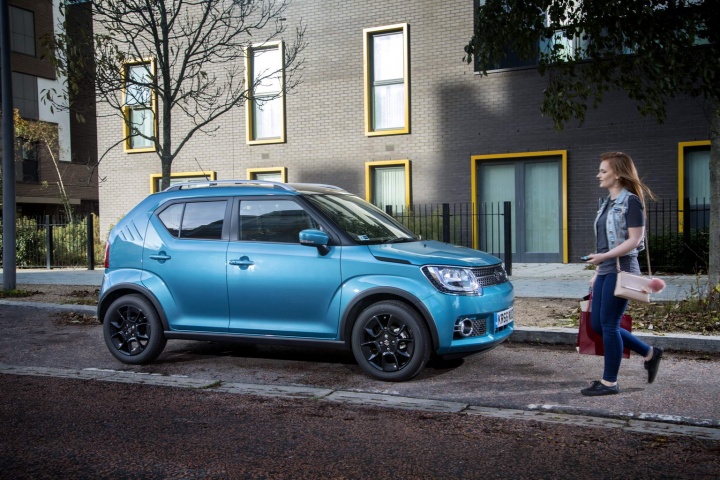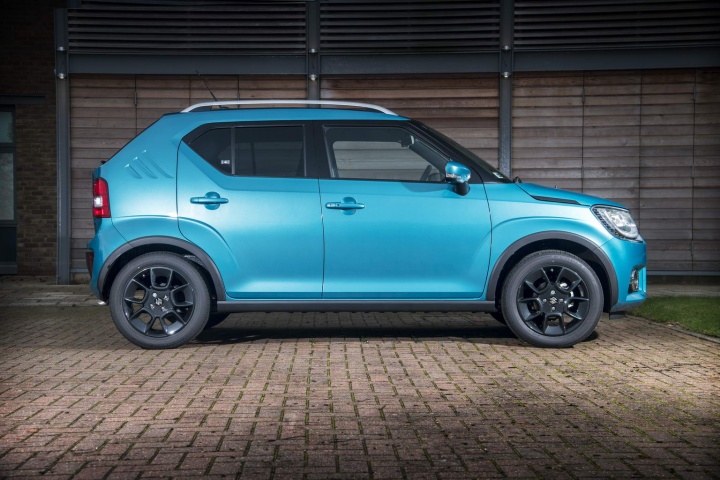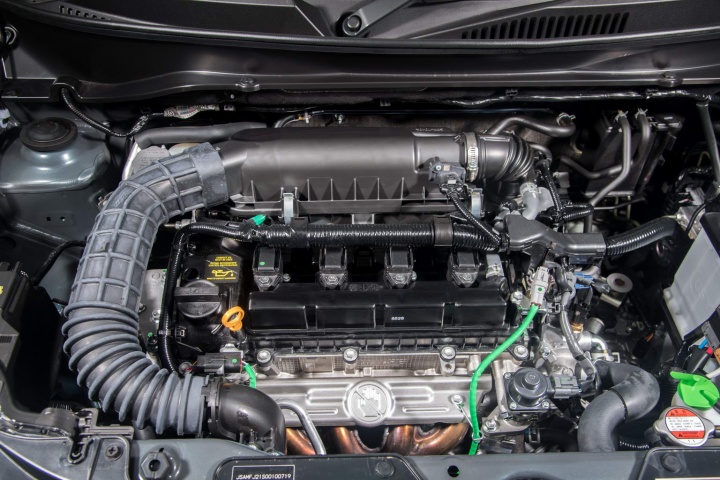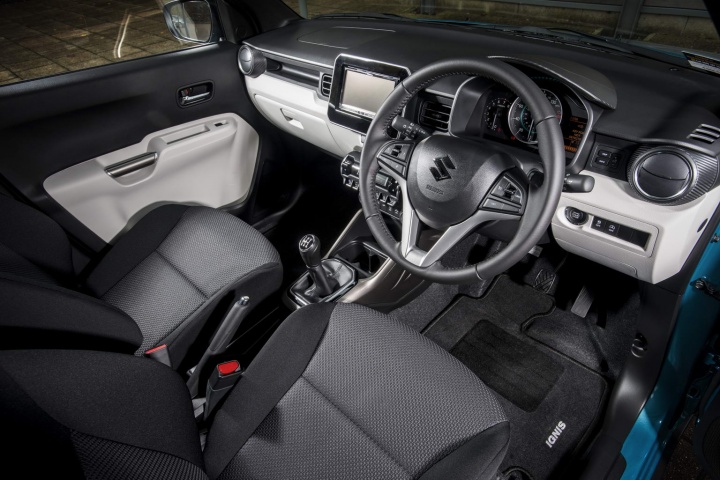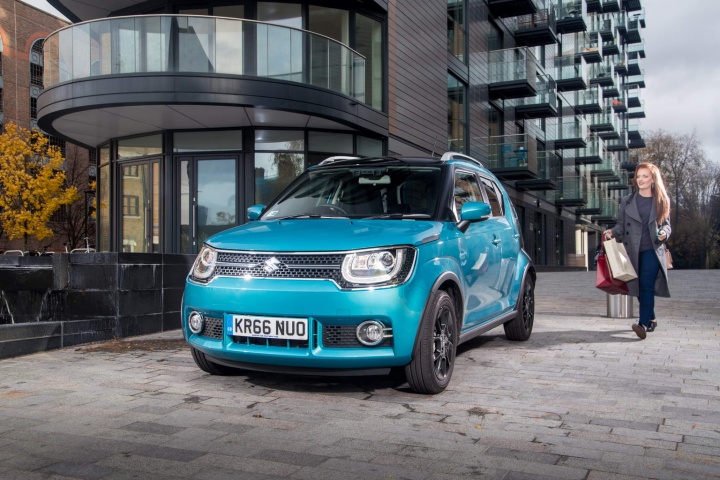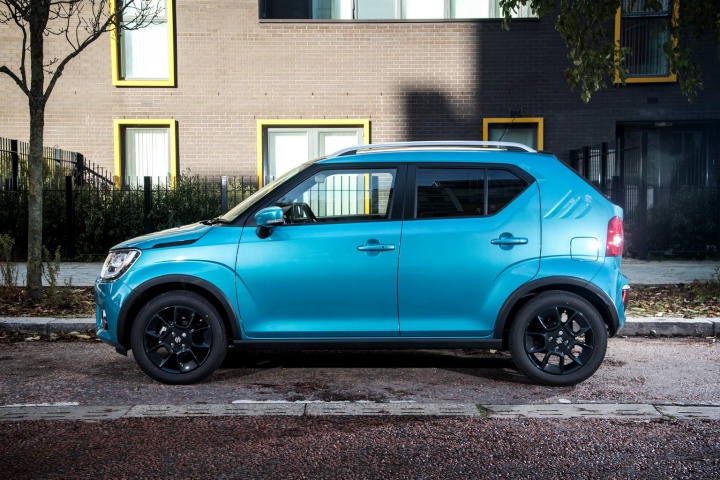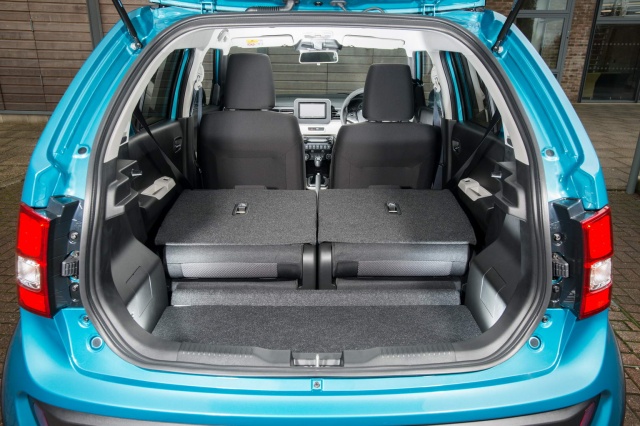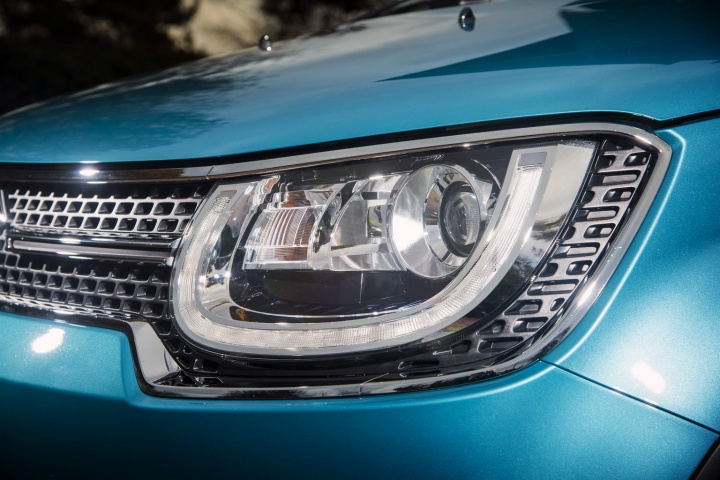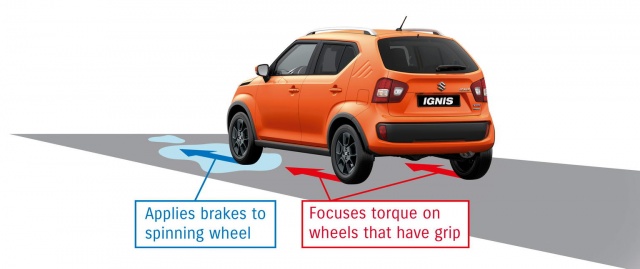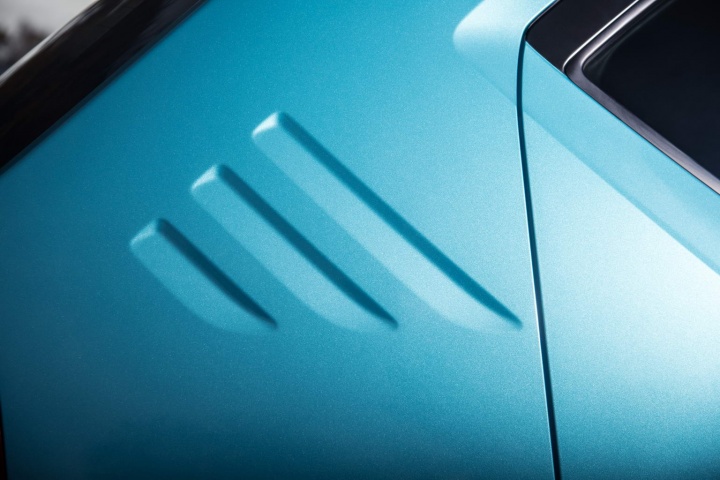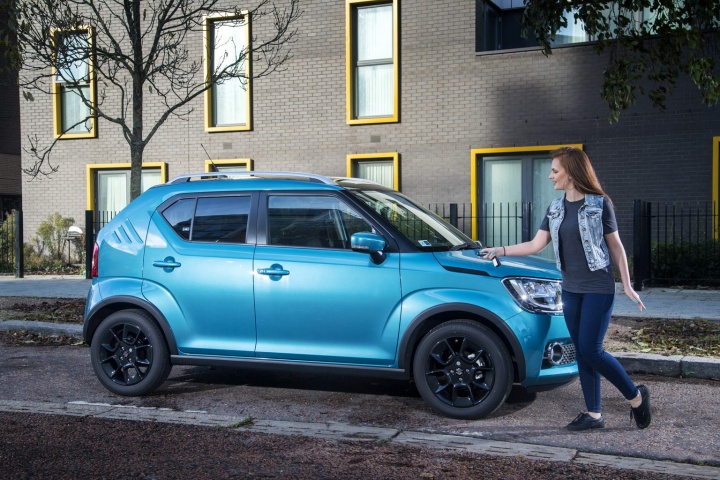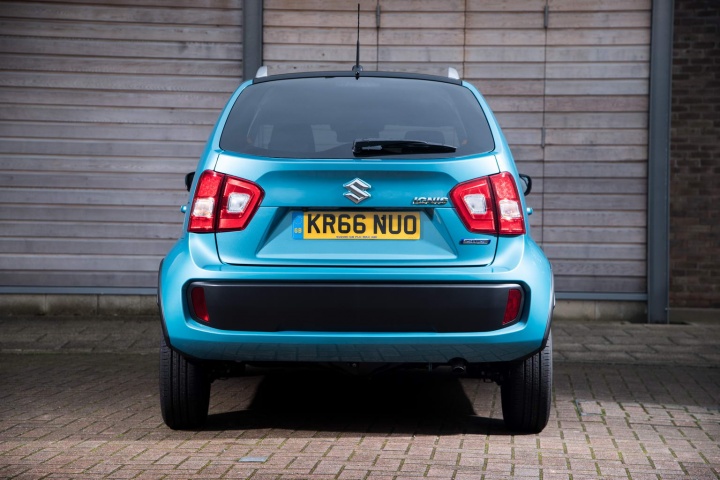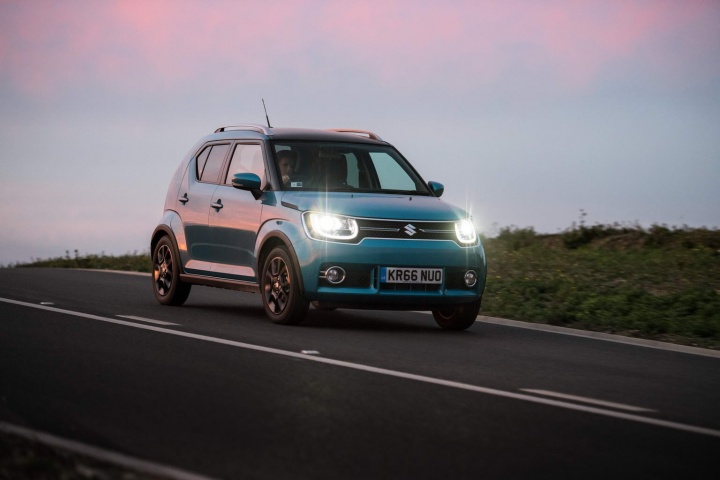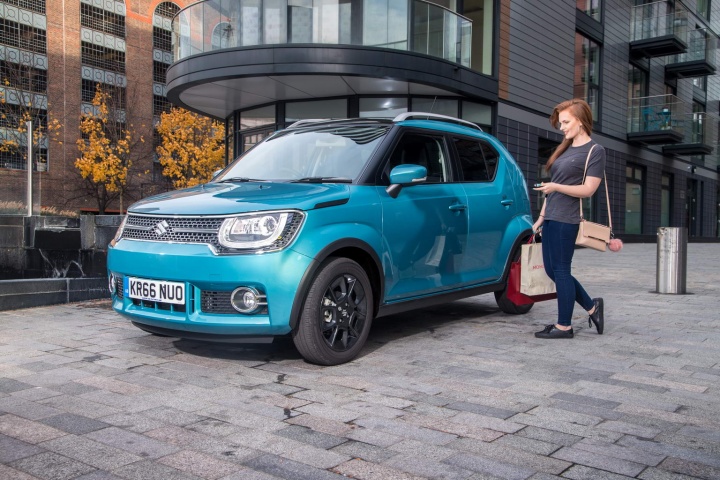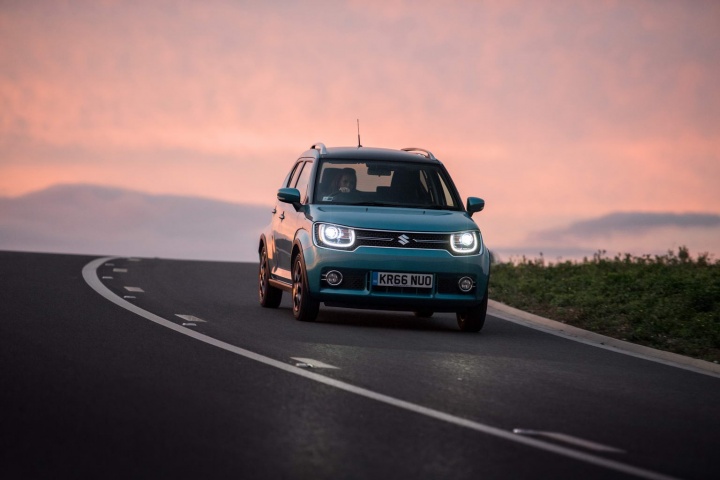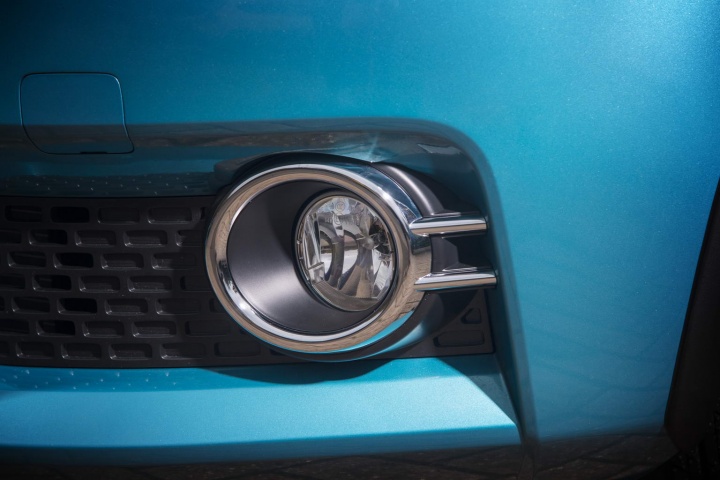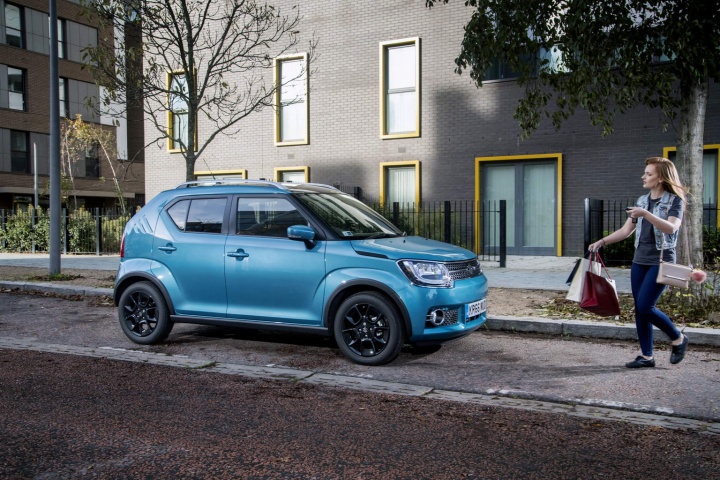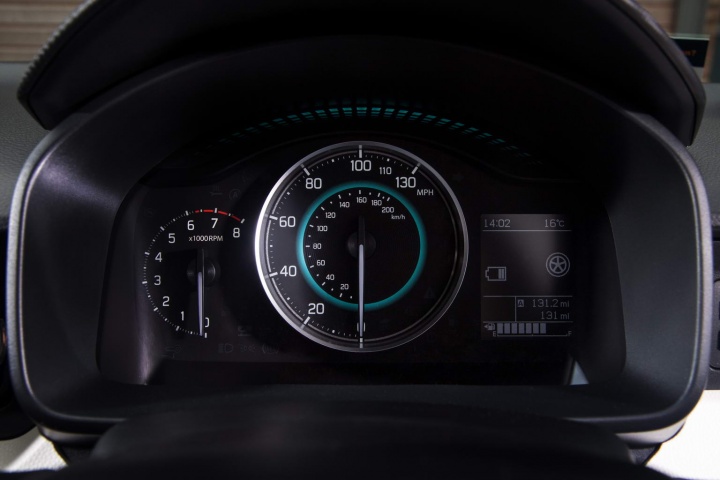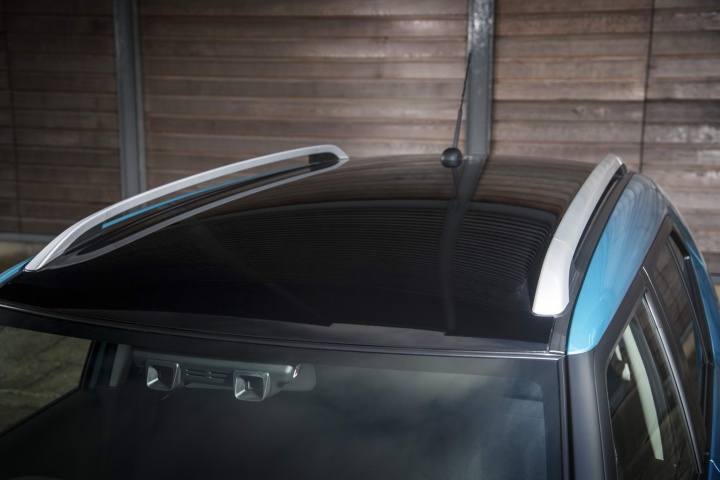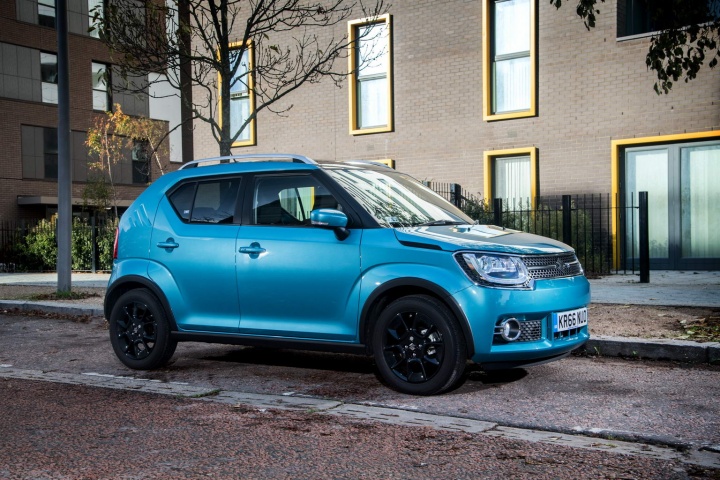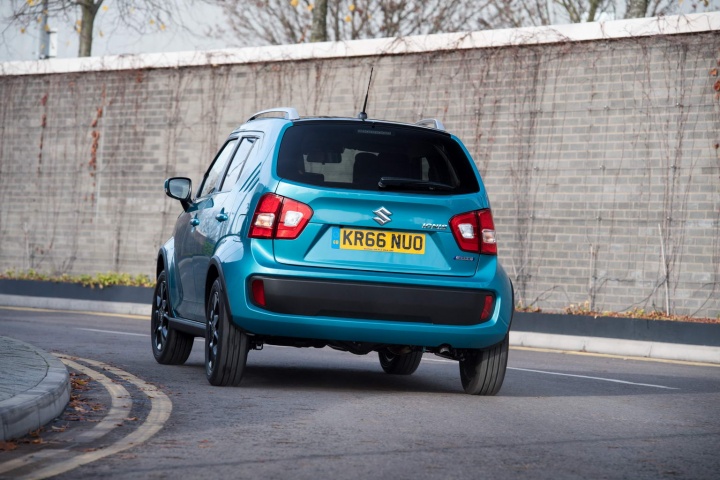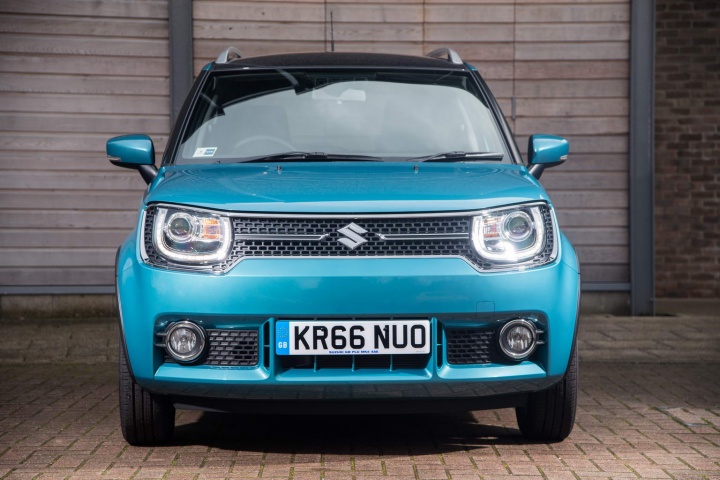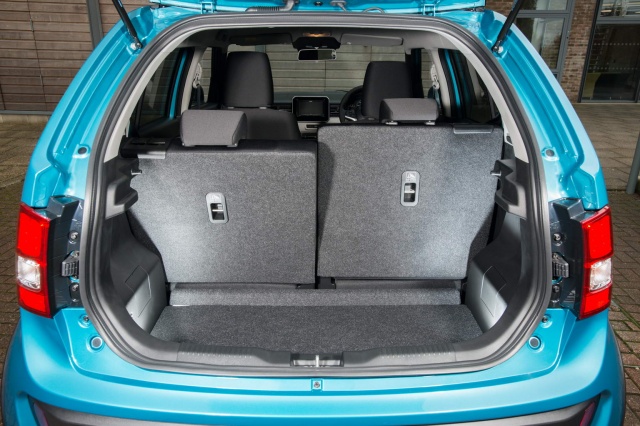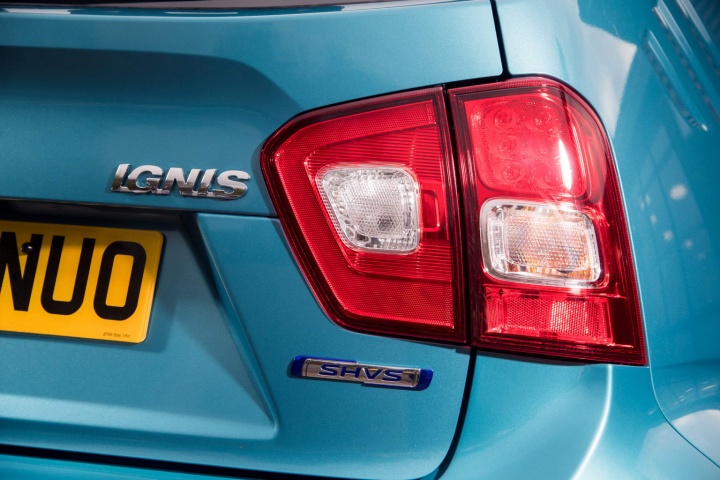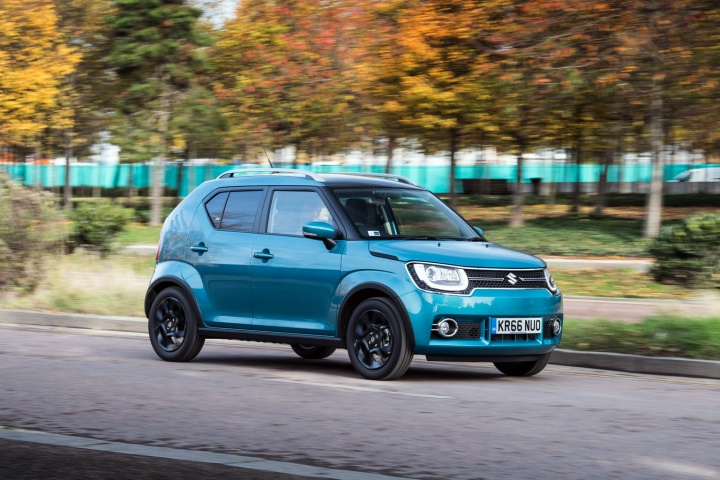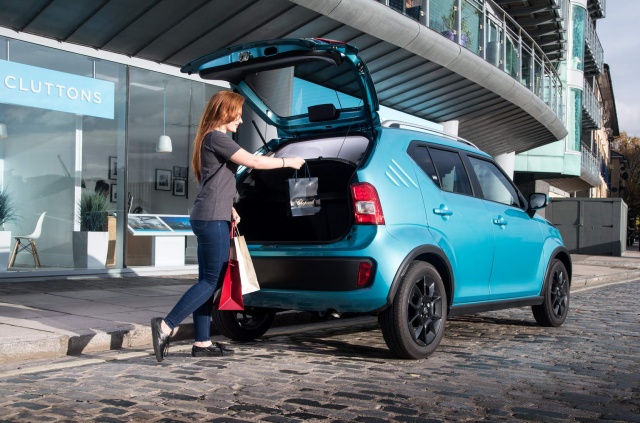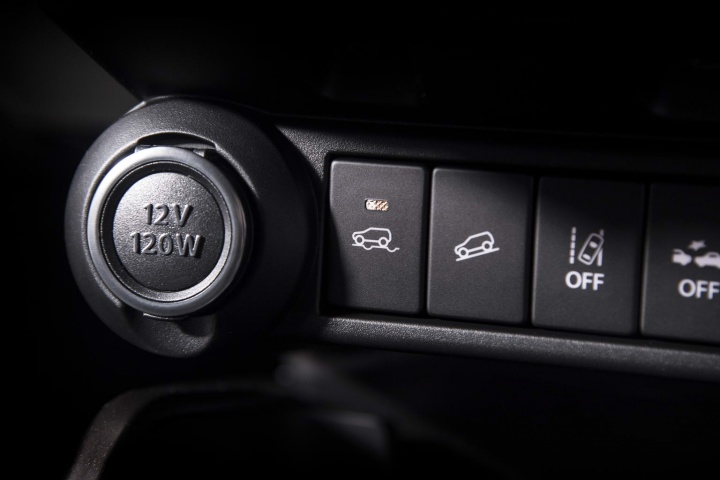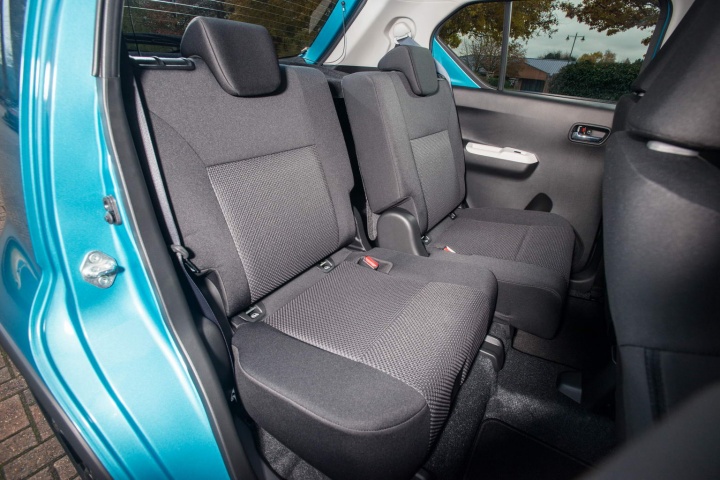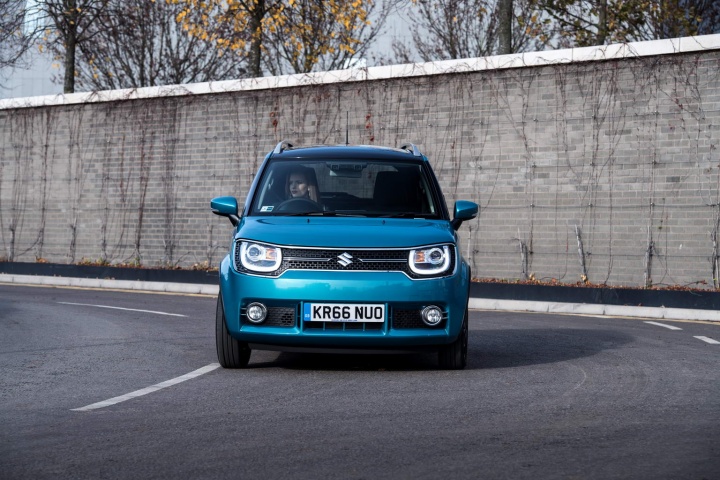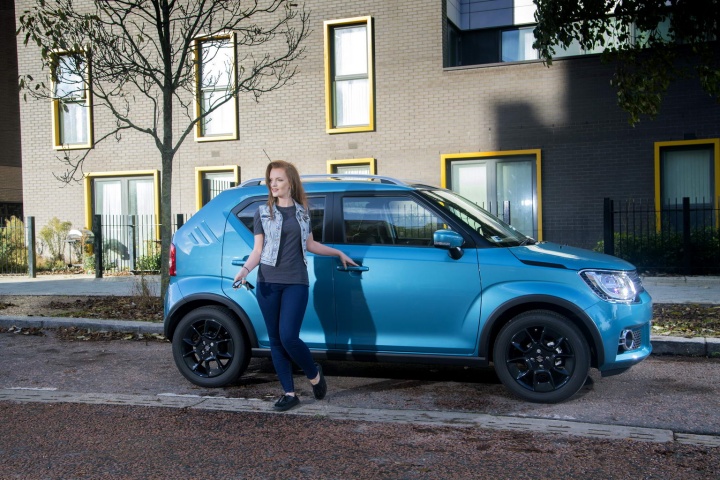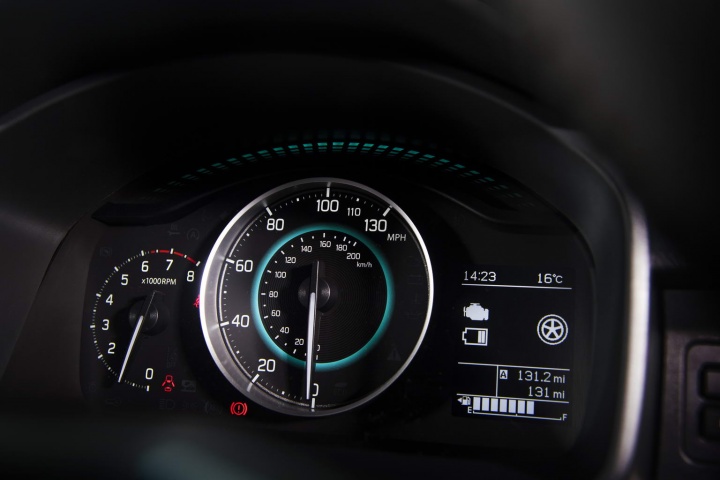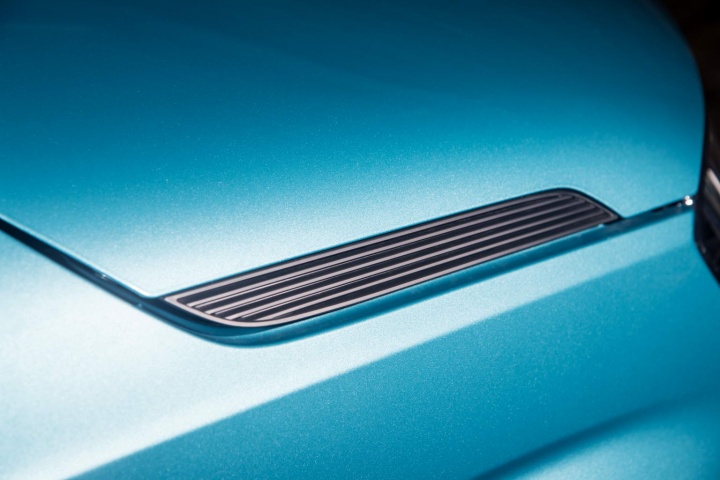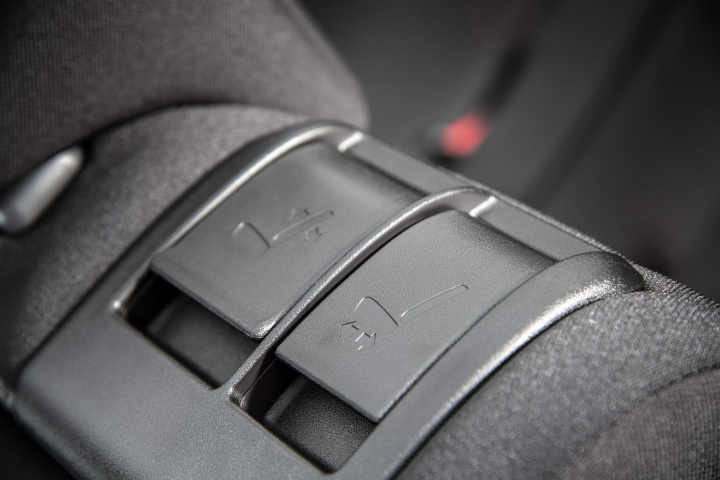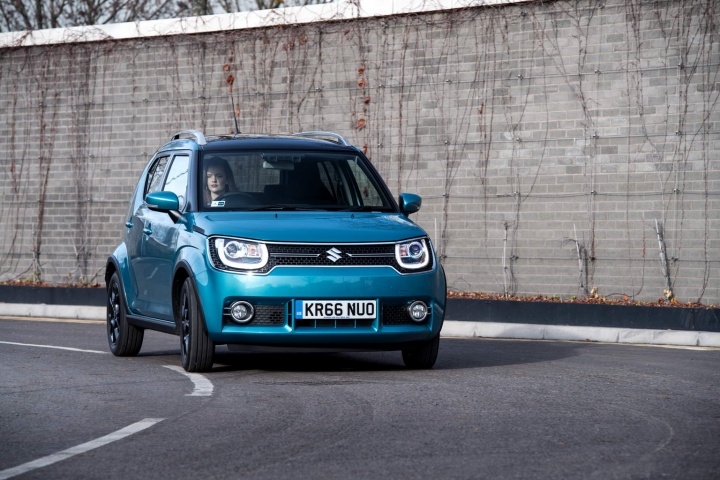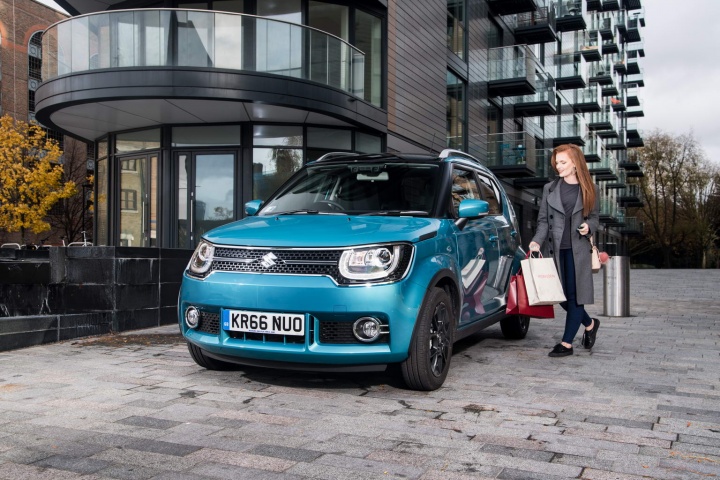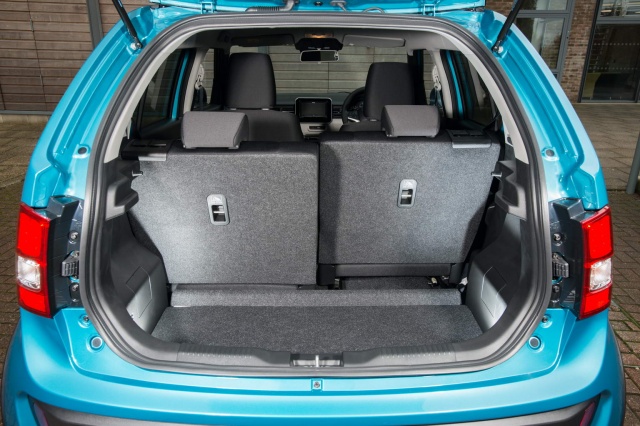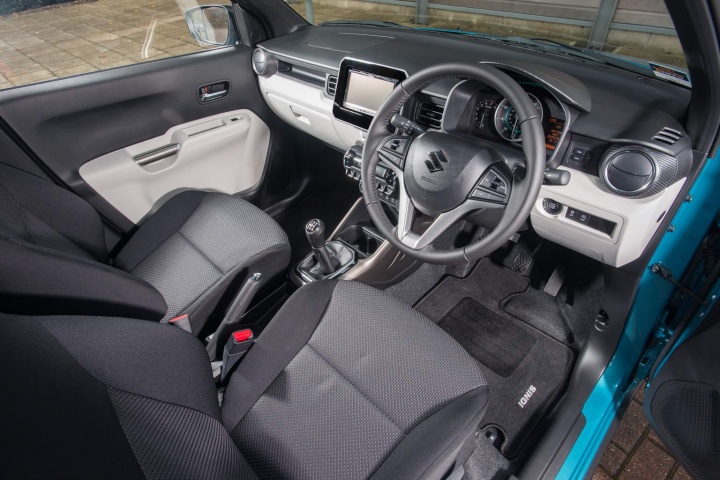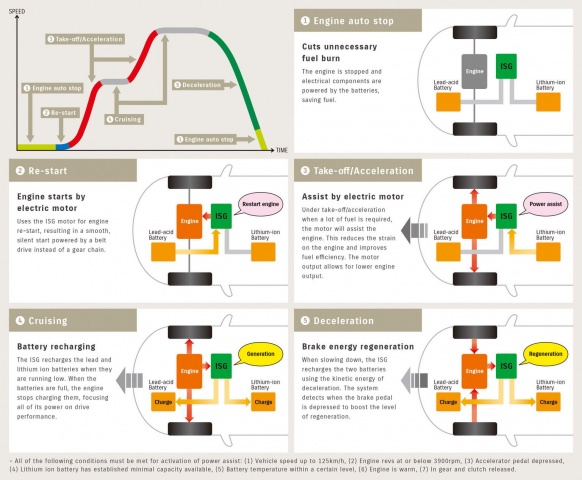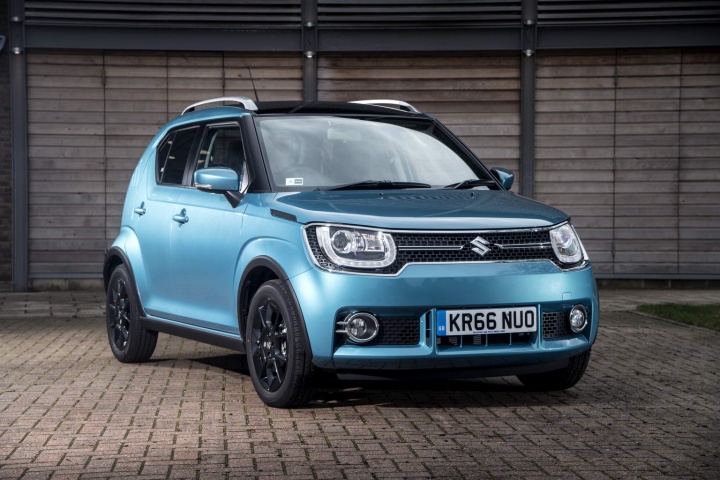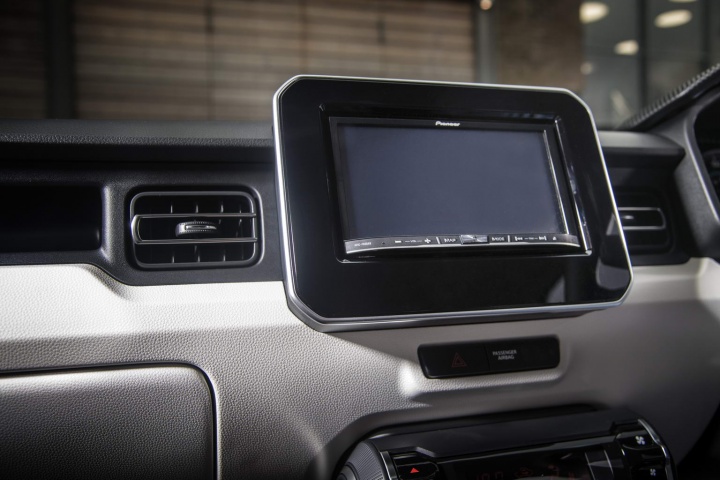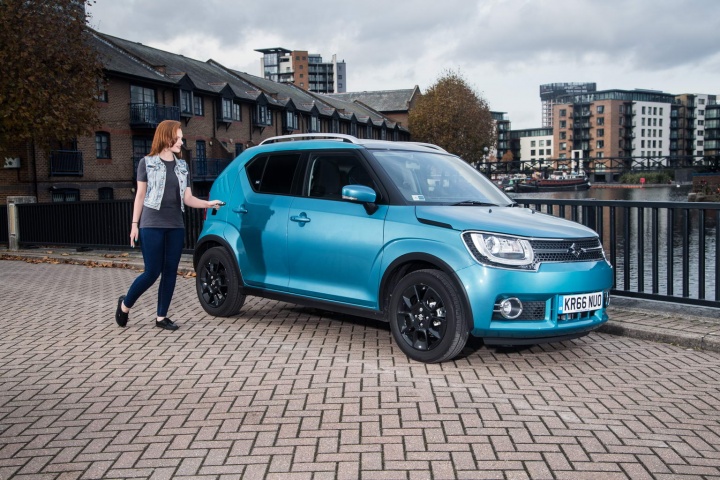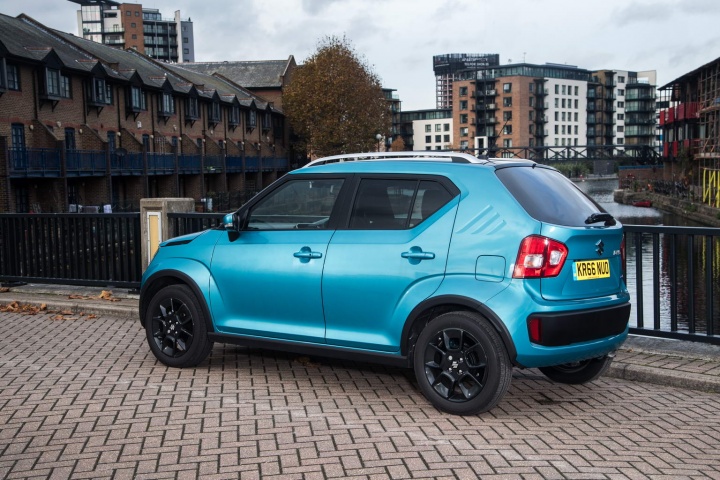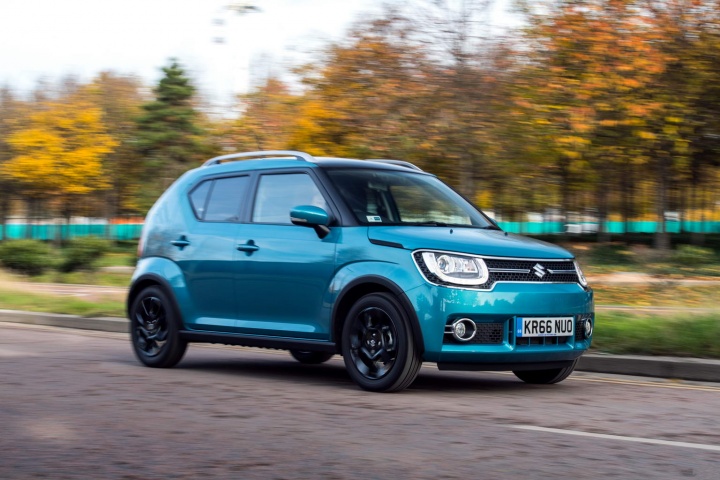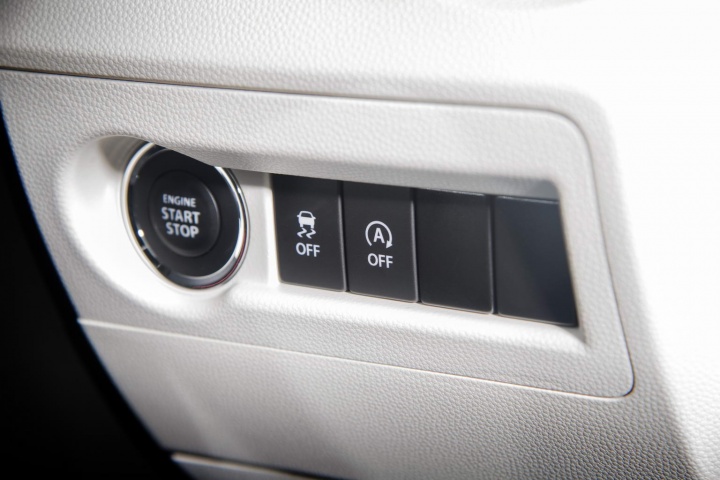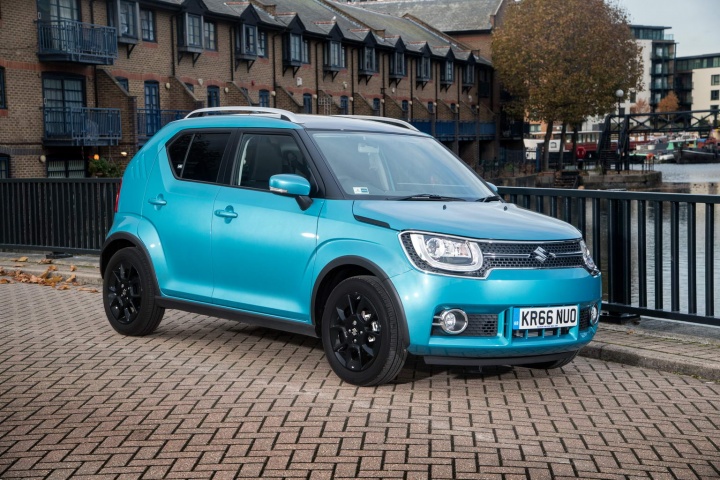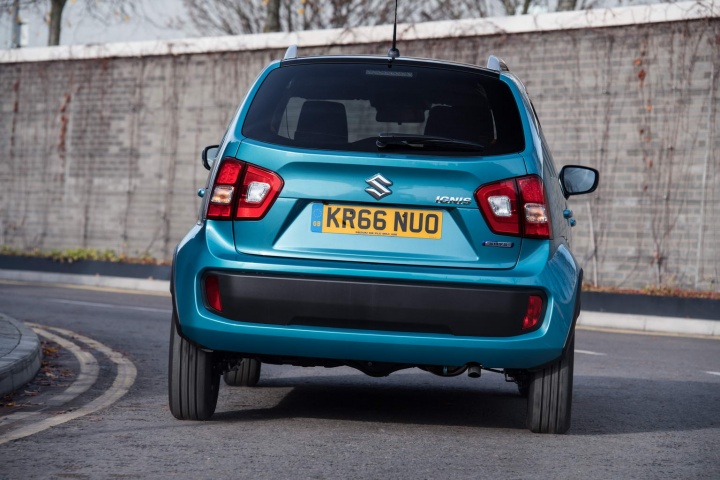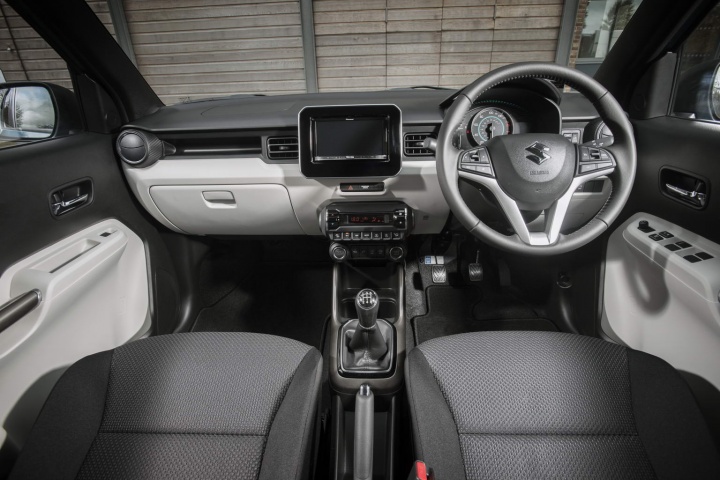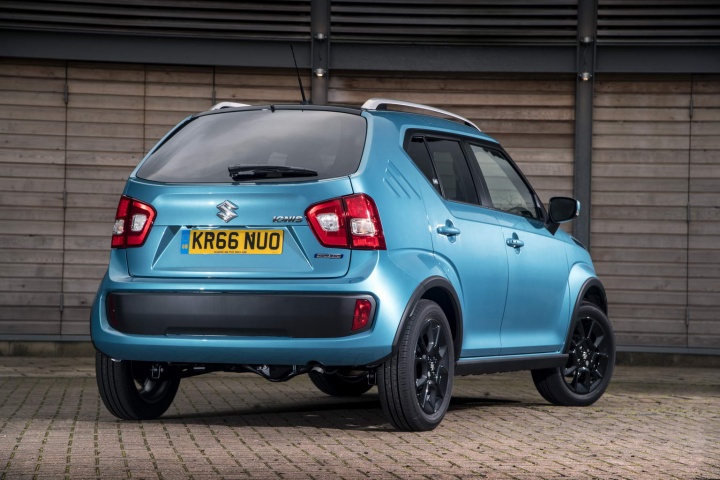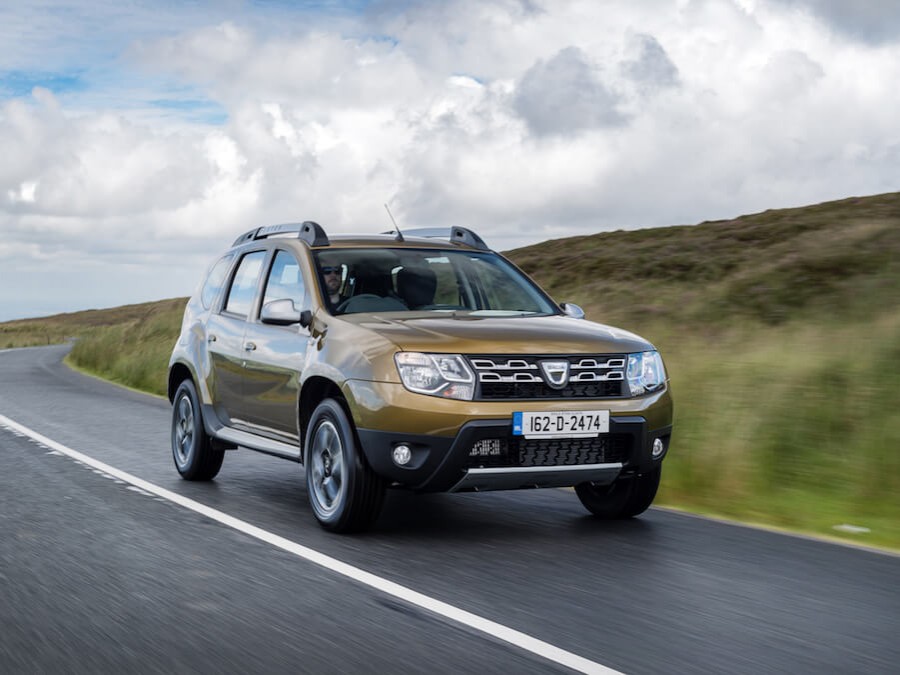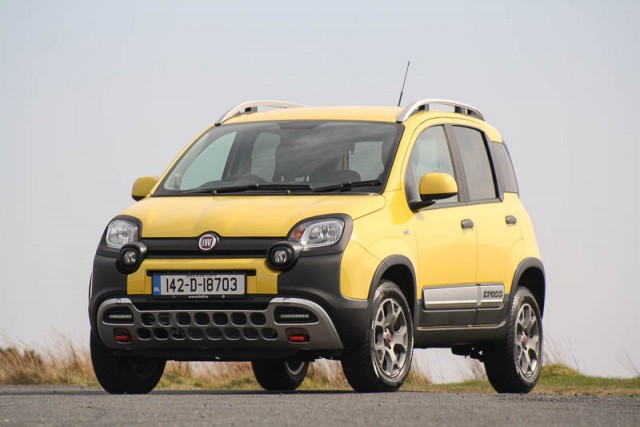Well, what have we here? Suzuki brings back the Ignis nameplate, but this time around, it's on an almost improbably small A/B-segment crossover SUV, rather than a tall and thin hatchback. If you're wondering how the Ignis v2.0 can possibly fit into an off-road line-up that already includes the sharp-suited new Vitara and the facelifted S-Cross, then worry not - this is Suzuki's chic urbanite machine that is tilted as a high-riding MINI and Fiat 500 rival. And the best news is that the promise built up by the intriguing aesthetic treatment of the Ignis is not eroded by a lacklustre dynamic performance, as this is a thoroughly likeable little machine all round.
In the metal
If you thought the Fiat 500 and MINI were cheeky and chic, then take a look at the new Suzuki Ignis. It couldn't be much more appealing to its target market if it took off its wide-brimmed hat and did the big doe eyes of Puss in Boots from the Shrek movies; honestly, look at that smiley face! Isn't it sweet?!
Ahem. The point here is that the Ignis, using a name that was previously employed on a rather dull hatchback built from 2000-2008, is now apportioned to the backside of what must be one of the smallest crossover/SUVs in the world. And the endearing styling is an almost direct lift of the iM-4 concept car that debuted in Geneva in 2015. In the main, the Ignis looks superb. It comes in a variety of brash, youthful colours with the option of contrast black wheels/roof and further personalisation options, and the net result is a car that has more visual clout than anything else in Suzuki's range.
Those of you of a certain age might just look at the Ignis and then vaguely recall a cool Suzuki of the 1970s, which was the SC100; it was known as the Cervo in its homeland of Japan, and informally as the 'Whizzkid' up here in the eastern Atlantic. Well, the Ignis pays due homage to that micro-coupe of 30 years and more ago, most notably in the three strakes dug into the C-pillar, but also courtesy of the raked rear windscreen, the quad-piece rear light clusters and front indicators moved inboard towards the radiator grille. Anyway, enough of the history lesson; to these eyes, at least, the Ignis looks mostly excellent from outside, although that rear end comes across as a bit bulky and fussy when viewed from the rear three-quarters.
Not that interested customers will care, mind, and they'll be even more enamoured once they climb aboard, as the Ignis has an interior that could be said to be the epitome of 'funky'. There are strong horizontal lines defining the dashboard, this trait emphasised by a two-tone black-and-white colour scheme that will be found on all cars. The door pulls and the sides of the transmission tunnel (emblazoned, as they are, with those three SC100 strakes again, as on the C-pillar outside) then come with a splash of colour on them, either orange or titanium, depending on the car's exterior paint.
The Ignis' cabin is an excellent example of how to make an affordable cockpit look great and feel fine, despite the fact many of the materials used are of - how can we put this? - a budget persuasion. Rap your knuckles on the dash top and the structure will bow, but otherwise a lot of the main touchpoints are well rendered and the displays/controls look lovely and crisp, and are perfectly well laid-out. Higher-spec cars have individually sliding rear seats (which means four occupants only) that allow for a bit more boot space at the expense of legroom in the back, and in general the driving position is absolutely fine for a car like this; you sit nice and high with a good view of the road, without feeling like you are perched on the Suzuki rather than hunkered down in it. Therefore, it's a value-for-money cabin in the Ignis, but the company must be commended for making it physically capacious within and visually interesting.
Finally, there is just one engine for the Ignis: the 1.2-litre 16-valve Dualjet four-cylinder petrol, as seen in the Suzuki Swift and other stablemates. This develops 90hp and 120Nm as standard, driving the front wheels only through either a standard-fit manual or an optional Auto Gear Shift (AGS) transmission, both of which have five ratios. However, using a drivetrain found in the Suzuki Baleno, there's a (very) mild hybrid option in the form of the 1.2 Smart Hybrid Vehicle by Suzuki (SHVS) as tested here, which lobs a 2.3kW Integrated Starter Generator (ISG) into the mix along with a lithium-ion battery. You can have this as a front-wheel drive car or Allgrip Auto four-wheel drive variant, but AGS is not compatible with the ISG so the SHVS variants are manual only. Get all that?
Suzuki doesn't quote any different power/torque outputs for the Ignis hybrids, although it will admit there's an extra 50Nm on tap from the ISG - and it's this technology that improves the front-wheel drive SHVS model's eco and performance data. This Ignis is the only one to dip below 100g/km of CO2 at 97g/km, and thus into road tax Band A2, with 65.7mpg and a 0-100km/h time of 11.4 seconds also part of the deal. These numbers compare to the 'regular' 1.2's equivalents of 104g/km, 61.4mpg and 13.5 seconds. It should cost considerably less than €1,000 to upgrade a 1.2 to SHVS spec and we'd advise you do, because that extra torque is most welcome in day-to-day driving.
Driving it
The Ignis, built on the new generation platform from Suzuki that is shared by the Baleno, is light. Seriously, incredibly light. Specify it in its most basic 1.2-litre, front-wheel drive manual format and it will tip the scales at a meagre 810kg; if you want a reference point, the 1970s Whizzkid was 535kg, and that didn't have to conform to any of the sort of occupant/pedestrian safety laws the Ignis has to pass. Fear not if you start adding the SHVS system (+6.2kg) or the Allgrip Auto four-wheel drive (+50kg) capability either, because any Ignis should be comfortably under the 900kg mark before anyone steps aboard. Even for such a titchy thing as this, that's an incredibly trim kerb weight to be playing with.
And it's this lack of mass that permeates everything the Suzuki does dynamically, in a wholly good way. The one area where you might expect the Ignis to suffer as a result, that of ride quality, is actually deeply impressive, as the crossover largely deals with most roads in a fuss-free manner. It can get upset by the bigger lumps and bumps in the surface, and its short wheelbase/light weight combo does mean an occasionally fidgety town ride if the tarmac starts to crumble, but in the main the car is a good cruiser - rock solid on the motorways, free from the three-pronged aural assault of the wind, the engine and the tyres, and not requiring much in terms of minor steering corrections to keep it in lane.
Praise be, then, that the chassis seems pretty good once you get off the motorway and you're out of urban areas. It's not what we'd call enthralling but the featherweight Ignis likes to get its nose cleanly into corners, helped by steering that's direct and weighty - but not great for feedback. There is some lean to factor in to your cornering activities, but then there's also a refreshing lack of early-onset understeer too, so it proves to be a game little handler if you're in the mood. The SHVS drivetrain is fine, although the engine gets noisy and coarse beyond 5,000rpm (shame peak power's at 6,000rpm...), the gearbox is perfectly slick and pleasant to use and the brakes are good, although you have to get through a mushy first few centimetres of travel thanks to their regenerative capabilities.
Overall, it's a hearty thumbs-up for the Ignis' driving experience and it makes us wonder what this crossover would be like with one of the company's BoosterJet turbo units under the bonnet; that 140hp/220Nm 1.4-litre from the Vitara S would make for an intriguing Ignis Sport...
What you get for your money
This one's hard to predict. Prices nor specifications have not been confirmed for Ireland as yet, and precisely where the Ignis will fit into the cluster of small, affordable cars Suzuki already offers isn't clear. At its Paris debut in October 2016, the Japanese company said it would fit between the Celerio (from €10,995) and the Swift (€13,995); however, we reckon it's more realistic to expect it to slot in between the Swift and the Baleno (€17,995). We'll budget on the Ignis range starting at around €15,000.
Precise specifications are more guesswork, but, like all Suzukis, it doesn't take much of a walk up the trim grades to start adding in lots of desirable kit. It's more likely the Ignis will follow the Baleno's SZ-T and SZ5 spec structure, rather than the GL/GLX of the Swift and Vitara, so expect DAB radio with Bluetooth, front electric windows, satellite navigation on a seven-inch touchscreen, a rear-view camera, 16-inch alloy wheels, roof rails, wheel arch extensions and individually sliding rear seats on the SZ-T, with climate control, the Dual Camera Brake Support safety package (including Lane Departure Warning and Weaving Alert), keyless entry and go, rear electric windows and LED headlights on the range-topping SZ5.
Summary
If you like the looks of the Suzuki Ignis - and many who buy this sort of car will adore its friendly appearance - and you aren't put off by the quality of the cabin finishing (looks brilliant, feels OK, isn't built anything like as well as most European rivals in this market sector), then you're going to love this new, tiny crossover... provided it is priced correctly. We envisage the Ignis being excellent value and stealing sales away from regular A- and B-segment hatchbacks, and possibly encouraging a new class of micro-SUV. It's got a lot of quantifiably good points and a healthy dose of character too, so it looks like it could and should be a big success for Suzuki.

